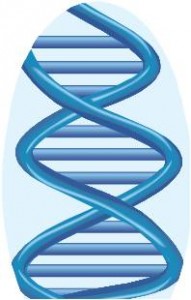This continues my series on Rootstech 2011 Takeaway messages.
Genetic genealogy is one of my interests. I retired from a long career in medical research (genetics and autoimmunity) and enjoy using DNA to complement traditional search methods. I was fortunate to be able to attend two DNA presentations at Rootstech 2011.
Schelly Talalay Dardashti presented: It’s in Our Genes: Revealing History Via Technology (A DNA Project Case Study).
Schelly Talalay Dardashti has tracked her family history through Belarus, Russia, Lithuania, Spain, Iran and elsewhere. A journalist, her articles on genealogy have been widely published. In addition to genealogy blogging (since 2006), she speaks at Jewish and general genealogy conferences.
While I don’t have an ounce of Jewish blood (my loss), I was interested in the process Schelly et al used for the project case study.
Why use DNA?
- provide evidence where no paper trail
- confirm or disprove a relationship or story
- cut across history/geography lines
- blood doesn’t lie
- results may point to better traditional methodology and resources by pinpointing details you may not have had before.
The Process
- Determine what you want to prove
- Determine your goals
- Find participants
The Iberian Ashkenaz DNA project was designed to prove genetic matches for Eastern European Jews – Sephardic, Hispanic, Latino. They had a specific goal (find the matches) and a secondary goal of looking at geographic location and surname variants.
This YDNA project was started in March of 2007 and they already have 251 participants.
Schelly spoke about the migrations of this group (using haplogroup maps) and the results they obtained. This study has helped her find more information in her Talalay line and has given her new avenues to explore.
She suggested that anyone participating in a DNA study be opened minded enough to understand that results you get might not be what you are expected.
Also one needs to be able to explain the results to people in your group with self conceived self identities.
She said Family Tree DNA has a larger database than the other companies. It is preferable to test against the largest database available. She also said FTDNA is a good place for Jewish matches because it has the largest database. Over 92% people in the database at Family Tree DNA are likely Sephardic.
For more information about this study or to participate, please contact Schelly Talalay Dardashtiat at the Tracing the Tribe Blog.
—
Steve Morse spoke on “From DNA to Genetic Genealogy: Everything You Wanted to Know But were Afraid to Ask.
Dr. Morse is an academic, engineer and the father of the 8086 processor, who taught himself all about DNA and decided to teach others. He is also known for his One Step Search engines. (see my pre Rootstech interview with Dr. Steve Morse).
This talk was DNA 101.
What it is, what it does, what are SNPs and STRs. How we can use DNA in our family tree research.
I won’t duplicate it here because his entire DNA talk is on his webpage along with a lot of other useful information.
He too mentioned that we should test with the company that has the largest database. He didn’t mention company names as he said it was up to us to figure that out (see Schelly’s comment above – FTDNA has the largest database.)
I enjoyed the examples he used and his sense of humour.
Both talks were thoroughly enjoyable and educational. DNA is an useful adjunct in helping unravel the story of one’s family tree.
—-
[Disclosure – I was selected as an Official Rootstech Blogger and received perks such as free registration]
